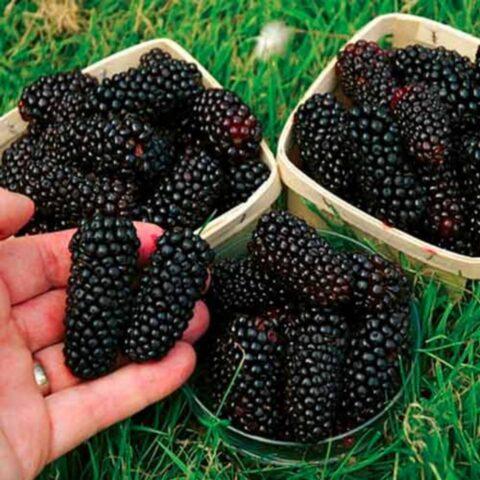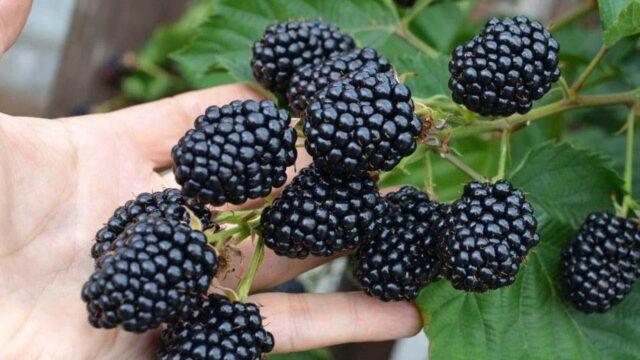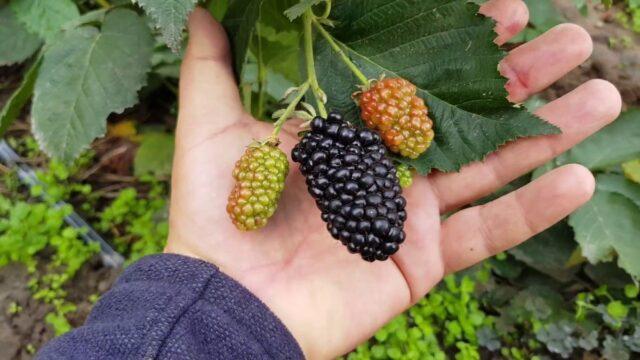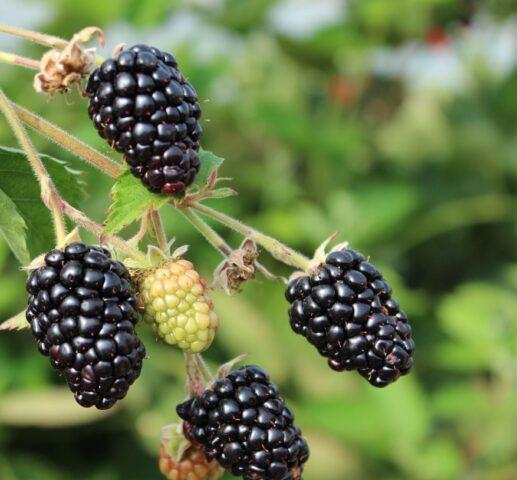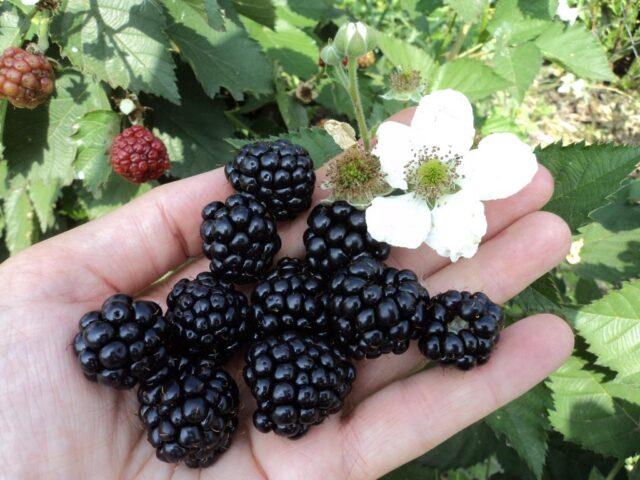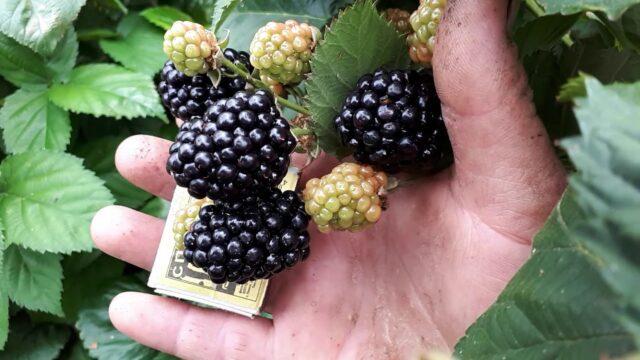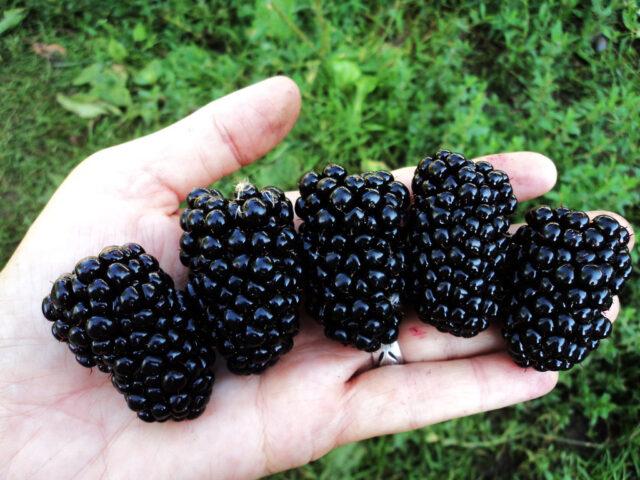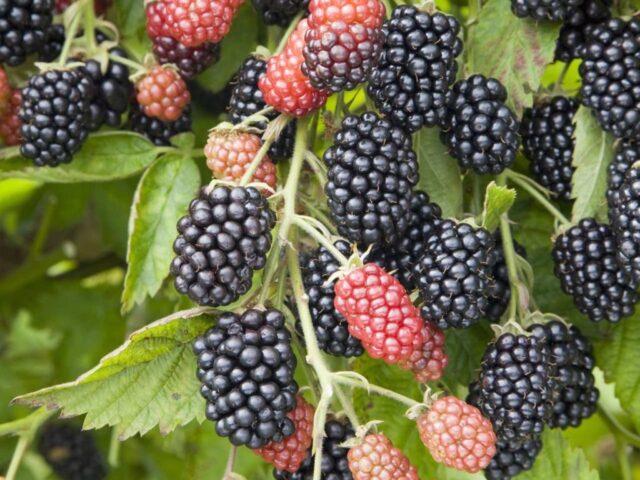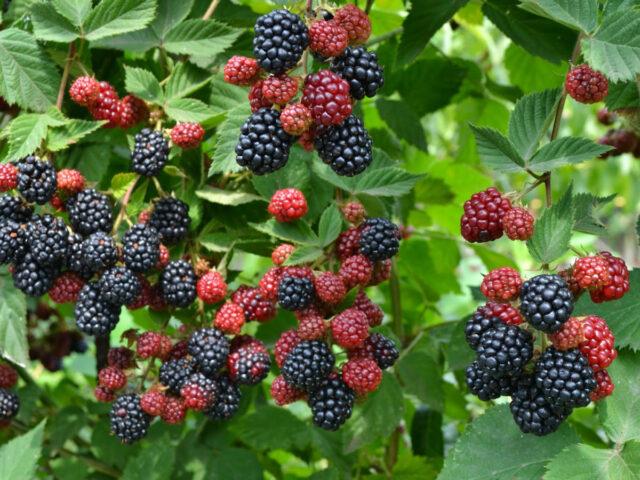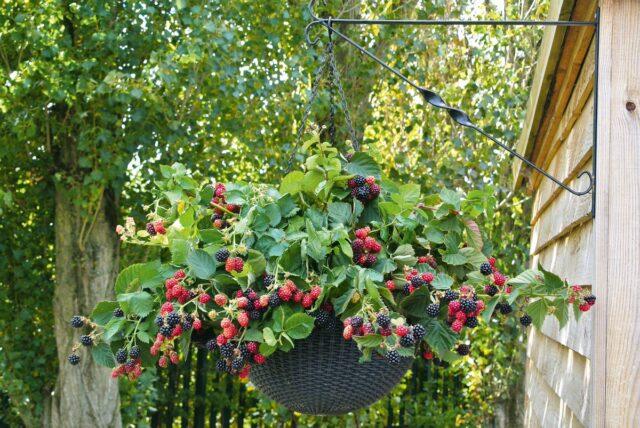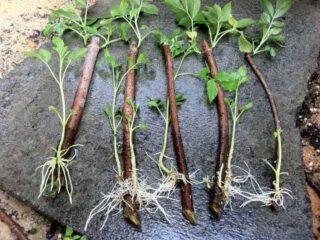Content
Blackberry is a perennial fruit shrub that has not yet gained wide popularity among gardeners. But, judging by the reviews, interest in this culture is growing every year. After all, in its characteristics, it is in many ways similar to raspberries. And its berries are also tasty and healthy, but they have a dark, almost black hue. The growing popularity of the shrub was also facilitated by selection, thanks to which varieties of remontant blackberries appeared, which made it possible to collect two crops in one season.
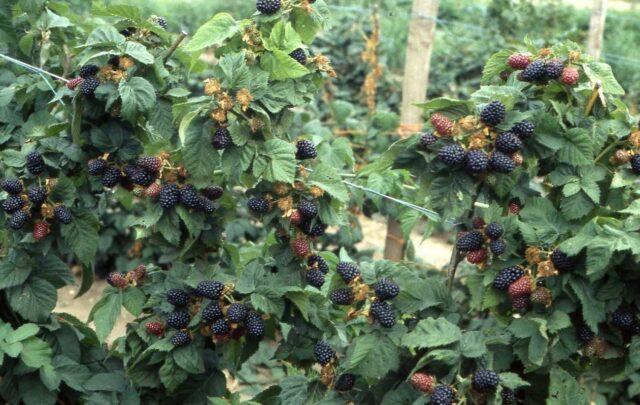
Repaired blackberries appeared relatively recently, in the early 2000s.
Advantages and disadvantages of remontant varieties
Like all fruit bushes, the remontant blackberry has not only advantages, but also disadvantages. Therefore, in order to get a complete picture of this culture, it is important to familiarize yourself with them.
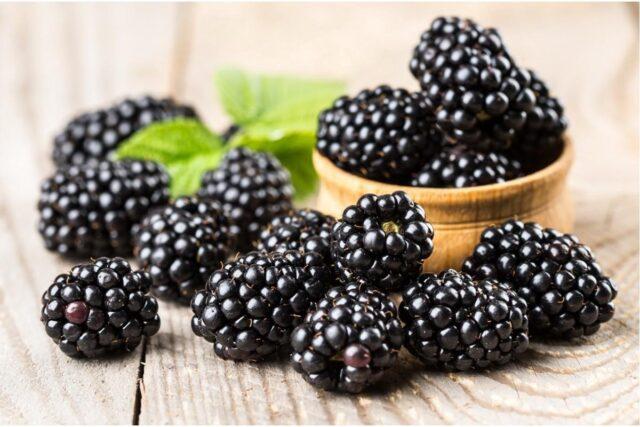
The repairing blackberry is distinguished by its compact bushes.
Main advantages:
- The first harvest ripens already in the year of planting.
- Increased resistance to temperature extremes, diseases, pests.
- Doesn't require complicated preparation for winter.
- The bushes regularly bloom, which increases the decorativeness of plants and the level of pollination of neighboring crops.
- The shoots are directed upward, the diameter of the growth is moderate, which facilitates care and contributes to the close arrangement of the bushes.
- The ripe crop lasts for a long time on the shoots, retaining all marketable qualities.
- The second fruiting period lasts until frost.
- Universal application, excellent berry taste.
- The crop is suitable for transportation.
Disadvantages:
- It needs regular watering, since with a lack of moisture in the soil, the fruits become smaller, and the yield decreases.
- The soil is demanding on the composition and reacts poorly to alkaline soil.
- During the fruiting period, the branches of the bush may not withstand the load and lean to the ground, so you need to install trellises.
- The berries are poorly separated from the receptacle, which complicates their preparation for processing.
Harvest varieties of remontant blackberries
The main feature of the remontant blackberry is that it can produce two crops. The first berries on the bush are formed on last year's shoots, and with repeated fruiting - on the branches of the current year. But among all remontant types of crops, they are especially productive.
Among them:
- Giant. The variety has high frost resistance, easily withstands a temperature drop down to -30 ° C. Forms bushes up to 2.5 m high. The berries are elongated up to 5 cm, the average weight of each is more than 20 g. The yield per bush is 30 kg per season. The variety requires the installation of a trellis, since the branches do not withstand the load during the fruiting period.
The giant requires timely and competent pruning
- Amara. Chilean novelty, which was launched in 2017. It is characterized by a large size of fruits, the average weight is 15 g. Forms bushes up to 2 m with a growth diameter of about 1.5 m.
Amara has excellent taste.
- Prime Ark 45 (Prime Ark 45). The variety was bred by American breeders.It is characterized by large, elongated and very sweet berries. Average weight of fruits is 7-9 g. The first harvest ripens by the end of June, and the second - at the beginning of September. Differs in powerful shoots that can easily withstand the load. The variety is high-yielding, its berries are suitable for transportation.
The branches at Prime Arc 45 are completely covered in thorns
Bearless varieties of remontant blackberry
Thanks to the efforts of breeders, varieties were obtained, on the shoots of which there are no thorns, which is unusual for this culture. This has greatly increased the interest of gardeners and also made it easier to care for shrubs and harvest.
Bearless varieties of remontant blackberries with photos and descriptions:
- Prime-Ark Freedom. The variety was obtained in 2013 in the United States. It is rightfully considered the most delicious of the remontant species. Average frost resistance, the shrub can withstand temperatures down to -14 ° C. Fruits are elongated, weighing 9 g. The yield per bush is 7 kg. The length of its erect shoots reaches 1.7 m.
Tasting score of Prime-Arc Freedom is 4.8 points
- Prime-Ark Traveler. The variety was obtained at the University of Arkansas (USA). It is characterized by a consistently high yield. Berries of dense consistency, weighing 7-9 g. Frost resistance up to - 25 ° С. The variety easily tolerates short-term drought.
Prime Arc Travel requires shelter for the winter
Varieties of remontant blackberries by areas of growth
Not all types of remontant blackberries are able to show good performance in different regions. Therefore, when choosing, you need to give preference to zoned varieties.
Varieties of remontant blackberries for the Moscow region
The climate of this region is characterized by early autumn frosts. Therefore, you should select species that have time to give the harvest before the onset of cold weather.
Varieties suitable for the Moscow region:
- Prime Jim. American species obtained in 2004. Shoots are strong, 1.7 m long, completely covered with thorns. The mass of berries reaches 10 g. Fruits are elongated up to 4 cm. The berries have a moderate aroma, taste sweet and sour.
The sugar content of Prime Jim berries reaches 8%
- Black Magic. High-yielding remontant blackberry, which is characterized by excellent taste of the fruit. The concentration of sugar in berries reaches 15%. This species is self-pollinated, unpretentious in care. Forms erect bushes with a height of 1.2-1.5 m. The average weight of fruits is 11-15 g. The yield per bush reaches 15 kg.
Black Magic is highly resistant to disease
Varieties of remontant blackberries for central Russia
The climate of this region does not allow obtaining a large number of berries in the autumn, therefore, species with an early and medium ripening period should be chosen.
Among them:
- Black Jam. A novelty variety that went on sale only in 2017. It is distinguished by erect bushes, the height of which reaches 1.7-1.8 m. The berries are elongated up to 4 cm, when ripe they acquire a black color. The taste of the fruit is excellent. The tasting score is 4.7 points.
Ripe Black Jam fruits have a shiny surface
- Prime Ja. It is considered the earliest species among the remontant blackberries. The first time it yields the harvest at the beginning of summer, and the second - by the end of August. It is characterized by strong shoots that are completely covered with thorns. The berries are large, weighing up to 158 g, sweet.
The aroma of the Prime Yang fruit is similar to that of an apple
Varieties of remontant blackberry for the Urals
This region has rather harsh climatic conditions. Winter with severe frosts, long spring with frequent return frosts, short summer with rare sunny days and early autumn are observed here. Therefore, for cultivation in the Urals, you should choose an early remontant blackberry with increased resistance to adverse factors.
These include:
- Ruben (Reuben). It is characterized by erect shoots, the length of which reaches 2-2.5 m. After harvesting, the thorns on the branches crumble. The first berries ripen in early July, and re-fruiting occurs at the end of August. The average weight of fruits is 10-15 g, their shape is elongated, up to 4.5 cm. The yield is about 4 kg.
Ruben easily tolerates short-term drought
- Black Cascade. This variety can be grown in hanging pots, which allows you to get a harvest even in the absence of a free area for fruit bushes. The plant is characterized by drooping shoots, the length of which reaches 1 m. The first time the crop ripens in the second half of June, and the next - at the end of August. The average weight of berries is about 8 g. In the Urals, this species is recommended to grow on balconies and terraces.
Black Cascade belongs to the dessert types
Ripening varieties of remontant blackberries
The remontant types of culture also differ in terms of ripening. Early and middle varieties are suitable for growing in central Russia and the Urals, late ones - only for the southern regions.
Early varieties of remontant blackberries
These types of fruit shrubs are characterized by an early ripening period, which makes it possible to harvest twice, even in regions with short summers. But, as a rule, the early varieties are less aromatic, and the taste of the berries has a pronounced sourness.
These include:
- Prime Yang;
- Ruben;
- Black Magic;
- Prime Jim.
Mid-season varieties of remontant blackberries
These species bear fruit for the first time in mid-June, and the second in the first decade of August. Therefore, they can be grown in regions with a temperate climate, which contributes to the ripening of berries on time.
Medium ripening varieties:
- Giant;
- Prime Arc Freedom;
- Black Cascade;
- Black Jam;
- Prime Arc Traveller.
Late varieties of remontant blackberries
These types of crops are characterized by a late ripening period. But at the same time, their taste is excellent. They are suitable for cultivation only in the southern regions.
These include:
- Prime Arc 45;
- Amara.
Conclusion
The varieties of remontant blackberry differ in frost resistance, yield and ripening time. To get the most out of them, you need to first study the characteristics of each species. Otherwise, all efforts will be wasted, since if the growing conditions do not match, the plant will not be able to fully develop and produce a crop.
